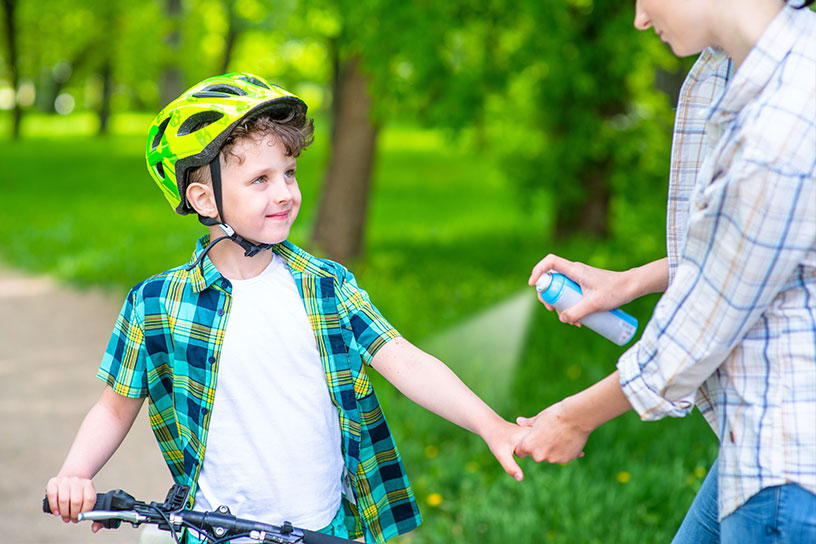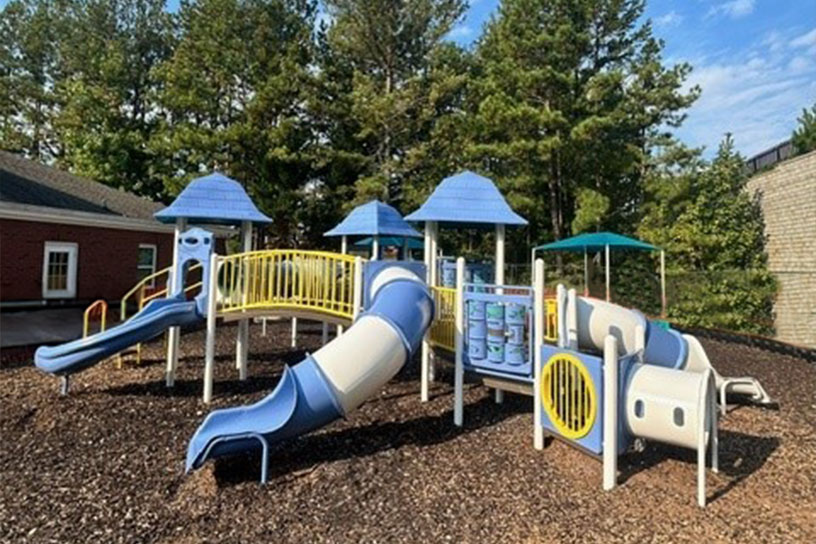Slides and swings are two key areas on the playground where playground maintenance is absolutely crucial. Mitigating entanglement risks, avoiding cramped use zones, and remediating inadequate surfacing are all parts of the upkeep process. Inspecting your space regularly and performing the necessary playground maintenance will keep your equipment safe and in working order for years to come.
Playground Maintenance for Slides
While slides may not seem like a major safety risk, they are one of the main entrapment and entanglement hazards on a playground. Having a maintenance and playground repair plan in place can minimize the risks that slides prevent.
Inspect & Repair Surrounding Playground Surfacing
Whether you have loose-fill or unitary playground surfacing, your playground maintenance plan should involve inspecting all surfaces where children play. If you have a loose-fill surface, you’ll likely end up with low spots at the end of your slides and other critical impact areas from daily wear and tear. Maintaining these spots as part of your regular playground repair is key to sustaining a safe play space.
Maintain Sufficient Use Zones
Appropriate spacing at the top and bottom of slides can prevent collisions and other accidents. The National Recreation and Parks Association recommends 6-8 feet at the bottom of every slide. This space may not overlap the use zone of any other piece of playground equipment.
Inspect Slides & Hardware Regularly
Entanglement and entrapment are two significant risks on slides. Regularly inspecting all of the slides on your playground equipment and their hardware as part of your playground maintenance plan can minimize these risks. Pay special attention to any loose or missing bolts or protrusions at the entrance, exit, and slide chute joints.
Encourage Supervision & Enforce Slide Rules
While slides are generally considered safer than swings and other moving playground equipment, supervision is still crucial. Because slides seem less dangerous to children, they may test their boundaries by going down head first, standing, etc. Reviewing rules like sitting down before sliding and always sliding feet first can eliminate accidents when paired with active supervision as part of your playground safety plan.
Playground Maintenance for Swings
Because of their fast-moving parts, swings are a common location for playground accidents. With a few simple steps, you can prioritize both fun and playground safety.
Inspect Swings Regularly for Entanglement Hazards
S-hooks, chains, and ropes can all be major entanglement hazards for children at play. Regular playground safety inspections can identify damaged or missing pieces and mitigate these risks. While inspection and playground repair can be time-consuming, they are key to keeping your playground safe.
Consider Swing Placement
Since swings require some of the largest use zones, it’s best to place your swings on the outer boundary of your playground space. The “empty” use zones around swings can also attract children looking for a space to play or relax. To avoid accidents and injuries, don’t allow any play on the playground surface outside of the installed equipment.
Choose & Maintain Appropriate Playground Surfaces
Just like with slides, the space underneath swings is a critical impact area for your playground surfacing. Loose-fill materials will need to be inspected and adjusted as part of your playground maintenance. Unitary materials should be inspected for tears and other damage and replaced as needed.
Encourage Supervision & Enforce Swing Set Rules
Supervising children using swings is key to accident prevention. Children may swing higher than they should or may twist to one side and lose control of the swing. Appropriate supervision and reviewing appropriate playground behavior and rules are two of the best defenses against swingset accidents.
Want to ensure your swings and slides are in tip-top shape? Our licensed experts can audit, inspect, and repair key areas of your playground and keep the children who use your playground safe.





